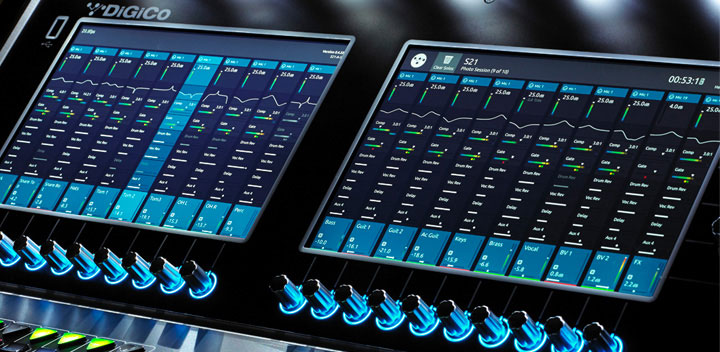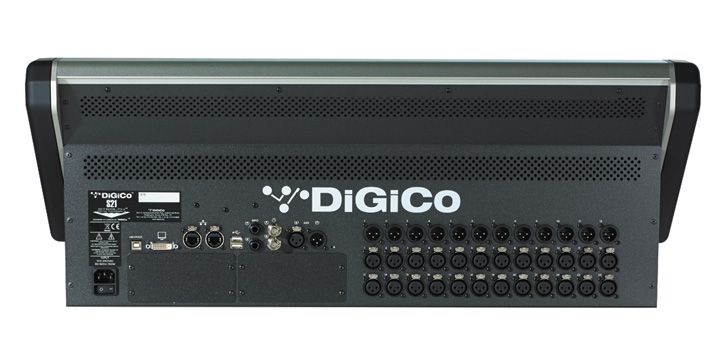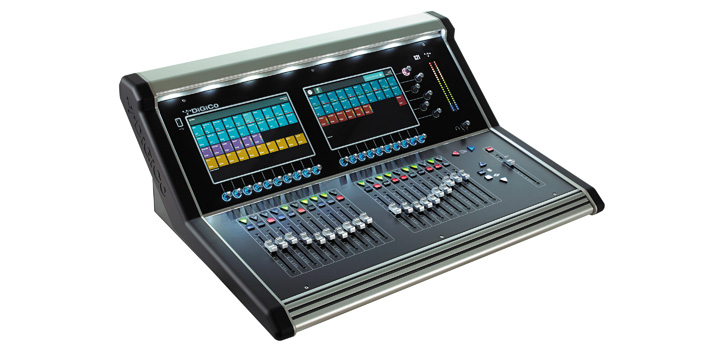



Since it's inception in 2002, DiGiCo has always tried to innovate and push technology to deliver more in terms of flexibility and audio quality. There are limitless highlights, but two immediately come to mind; DiGiCo was the first console manufacturer to use TFT touch screen technology, and then went on to pioneer Stealth Digital Processing's FPGA technology to replace DSP as the main audio processor. Stealth Digital Processing has been instrumental in the SD Series range, where, in a recent independent survey, DiGiCo played a pivotal role in eight of the top ten international grossing tours of 2014; evidence enough that when it comes to live sound consoles, DiGiCo pioneers the way. ‘Cutting edge' means leading the world against the norm by demonstrating what can be possible with new unharnessed technology. That's exactly what the vision of FPGA and Stealth Digital Processing promised and the thousands of users today will confirm the reality. The flexibility of being able to reprogram devices from switch on to taking advantage of new compiling tools has allowed the SD range functionality to expand beyond expectation.
Using SD9 as our reference example, those investing at the time of launch of this ground breaking product have seen their console evolve into something more comprehensive and powerful, ie: Channels - at launch 40 Flexi channels, today 48 flexi channels (20 % more). Busses - at launch 16 flexi busses, today 24 flexi busses (50 % more). Output Matrix - at launch 8 In / 8 Out, today 12 In / 8 Out. On board FX - at launch 4 FX, today 8 FX. Dynamic EQ - at launch 4 DYN EQ, today 8 DYN EQ
No other console has evolved in terms of core processing to this level, and to take it further the complete sample rate shifted from 48kHz to 96kHz. This sample rate increase, in any ordinary console, would mean a reduction in audio processing. This is not the case with Stealth Digital Processing. When SD9 switched to 96kHz in 2012, there was no reduction in audio processing. All these updates were provided to existing owners at no additional cost, allowing them to make an exceptional return on their investment.
DiGiCo's belief in audio quality and road worthy mechanical design has limited their ability to release an affordable introductory product. These values have required the same pioneering approach to design, not to follow the trend but to deliver the flagship for a price point - and change expectations. DiGiCo's S21 does exactly that. By using new, lower cost FPGA components programmed with the same audio algorithms, and combined with a new form of control processor, DiGiCo is able to deliver the S21 with the fundamental technological values at it's core. Running in harmony with the FPGA core is a new ARM QuadCore RISC processor. Delivering faster processing with lower power consumption, this efficient tool, combined with the audio core, has allowed the development of a cost effective console worthy of carrying the DiGiCo brand to existing and new owners and users.
How to make the step
To date, it has been the Tiger SHARC controlling the FPGA, but integrating these three technologies, along with networking capabilities, was a brand new challenge. Using the high power QuadCore SoC, associated with high bandwidth memory, S21 connects to a low power 484-ball array FPGA which in turn connects to fourth generation control SHARC DSP, capable of not only controlling the FPGA, but offering the potential for additional processing in the future. The compact footprint of the S21 has no relationship to the scale of processing power going on under the polycarbonate worksurface.
Two Touch Screens
Touch screens are now part of our daily lives, but if you go back to our digital beginnings, DiGiCo incorporated them in designs as long ago as 1997. Continuing their integration, with the advantages of speed of control and user feedback, meant that S21 had to bend the rules again. We utilised the latest P-CAP multi-touch screens for clear visual feedback and gesture control, but also did not limit the user to a single screen - by providing multiple multi-touch screens!
The compact dual screen design of S21 provides 10 channel strips per screen allowing the operator instant feedback and control on 20 simultaneous channels. This amount of instantaneous feedback offers total reassurance when mixing large shows, but the newly designed drag, swipe and drop channel layout system makes it simple for operators to move channels and busses across the surface to design their own custom fader layouts.
Whatever function you are using, there is an interactive meter where you would expect it, and helpful colour coding so you know which section you're looking at, be it channel, aux, or group.
Visual feedback is all reinforced with the HTL functionality of the encoder rings, and anything not in use is automatically greyed out on the console so operator's attention is drawn to the right controls.
The beauty of having two screens not only gives you more channels to view at any one time, but it allows you to utilise one as a setup or master screen, while still operating with the other. You are always looking in the same location, whatever function you have highlighted.
Touch the EQ screen, and you can choose to pinch, touch and drag your curves on the touch screen, or for a more tactile experience, use the rotary encoders to fine-tune your frequencies, then press to change function or switch on/off. It's the same philosophy for all other processing functions within the console.
The new look screen designs are all developed under the flat designs philosophy, to aid the user learning curve and take away distraction from an operator. These new designs will still be familiar to existing DiGiCo users, but allow new operators to feel at home and ready to take advantage of the wealth of integrated processing.
Channel Bank Layout: as with all DiGiCo products, you can alter where the banks are located, and mix and match any channel, aux, group, control group, or matrix within a bank, with the ease of drag and drop, at the touch of a screen.
Interfacing
S21 comes complete with dual DMI (DiGiCo Multichannel Interface) option card slots, perfect for expandability, as it can interface with industry formats be it Analogue expansion, MADI, Dante, Optocore, Waves SoundGrid, or Calrec’s Hydra 2 Network. All bases are covered.
The following modules are available. Click on a module name for a large photo.
Construction
As an audio engineer, when you first stand in front of an S21, it looks and feels remarkably inviting. You want to touch and control the audio. This level of connection with the audio sources and their manipulation is something the world's leading audio engineers experience when they harness the powerful SD7. From the aerospace graded aluminium extrusion, the durable polycarbonate overlays, the RGB LED Hidden Til Lit technology coupled with touch sensitive faders / encoders and integrated LED light bar, you know it's a DiGiCo before you turn the PA on. The S21 redefines industry expectations at its price point.
The following options are available: